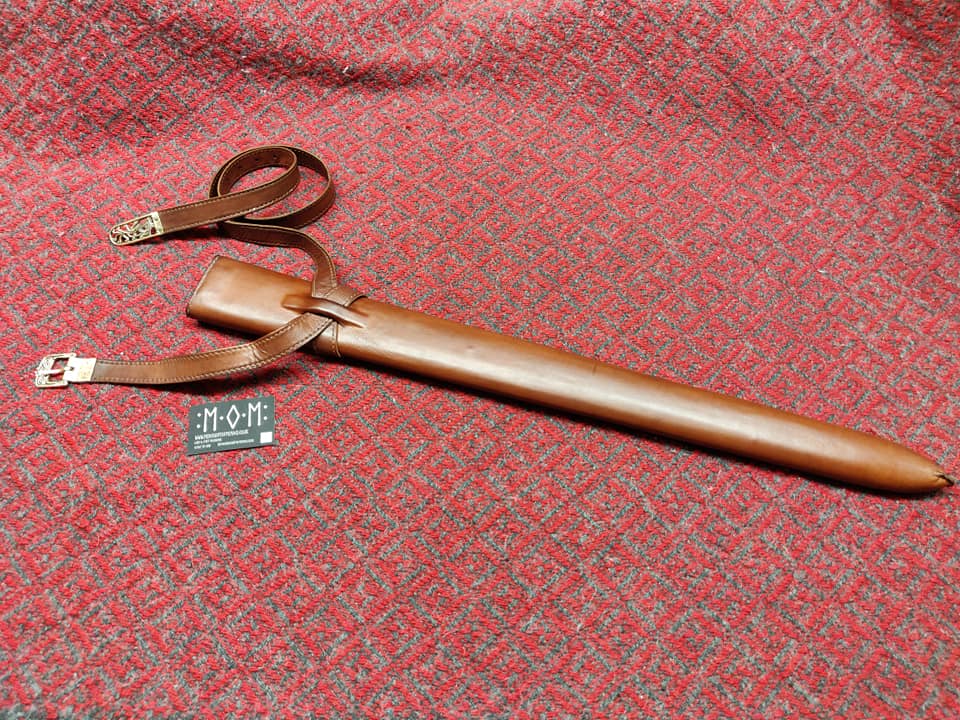

Finer scabbards drew attention to one’s sword, and simultaneously could demonstrate the wearer’s social standing, as detailed metallurgical work was typically affordable only to wealthier individuals. Scabbards from the medieval period thought to belong to knights frequently were made of precious metals and displayed fine patterning and craftsmanship. Knights often bore ornate scabbards, which signaled their prestige and social influence. Though the scabbard had many practical uses, it also had ceremonial and social value. When feasible, craftsmen would line the inside of scabbards with fine fur or an animal pelt in order to create a smooth draw, and to prevent the blade from wearing down against the inner seam of the scabbard. Some recovered scabbards appeared to have been attached to belts via metallic loops, while others were simply fastened with leather straps. Archaeological finds, particularly grave excavations, indicate that the scabbard was often fixed to a heavy belt at the hip, normally with a buckle or metallic clasp of ornamental quality. In addition to holding one’s sword, a scabbard also provided some protection to swords against the elements, preventing degradation and rust, and helped prevent accidental injuries that could arise from moving around quickly with a bare blade. Though they are often metallic in in modern times, they were primarily composed of wood or leather in the medieval period. The scabbard has an archaeological history dating back to the Bronze Age. Though modern culture often depicts the scabbard as mostly a medieval object, the scabbard is in fact known to be one of the oldest tools men have used, and is thought to have existed since the creation of the sword. Traditionally, the scabbard was fixed at one’s hip, or less frequently clasped to one’s horse, and facilitated easier access to the sword it contained. The scabbard is similar to a sheath in its shape and often in material composition, but specifically describes an object intended to store elongated swords rather than knives, or shorter blades. The straight guard provides ideal defense and a secondary striking point for clever wielders, while the brazil nut pommel adds weight to counterbalance the blade.An iconic piece of medieval military equipment, the scabbard is an item used for storing a blade. The fuller helps reduce the blades weight and improves control without decreasing durability. This gives the broad, powerful blade both cutting ability and a sharp tip for thrusting. The sword blade is forged entirely form dual hardened 5160 high carbon steel and features a subtle profile taper. Patterned loosely on the battle swords of the late 13th century, this sword features blade geometry designed to deliver both effective cutting and thrusting while also staying well-balanced and mobile. What really sets this sword apart is the unique combination of blade, guard, and pommel, which together form a truly distinctive weapon. There is no questioning where this Type X Medieval Sword With Scabbard and Belt falls in Oakeshott typology. Women’s Medieval & Renaissance Footwear.


 0 kommentar(er)
0 kommentar(er)
